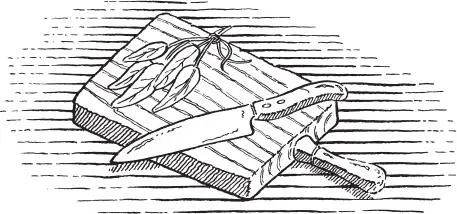You also have to carefully define your needs and goals. Make sure that you know what you intend to do and why. Are your motives pure? Having formulated your desire, you then need to assemble all your ingredients, checking that you have everything you need and finding substitutes where necessary. Then you can commence work.
Whilst working, you need to keep your goals firmly in mind, if necessary by writing them out and keeping a copy in front of you. You should also try to summon from within yourself the elements, in terms of thinking about what you are doing (Air), empowering it with enthusiasm (Fire) and emotion (Water), by the actual work (Earth) and by focusing your intent (Spirit). If you can, dedicate the work to a particular Goddess(es) and/or God(s), as you will find that they will lend their aid not only to your Magic, but also to making the physical side of things proceed more easily.
To Magically Empower a Product
There are many ways of empowering a potion or object, from simply placing it in the light of the Full Moon overnight to a full Ritual of Consecration ( see below ). However, you cannot sit food on the windowsill overnight for consumption the following day! Instead you might like to dedicate it to your chosen deity or deities. To do this, create a small clear space around your chosen item or product and visualize each of the elements in turn. See them in your mind’s eye materializing over the product and then enhancing it with their energy. Then take up the item in your hands and call (either out loud, or in your mind) upon the Goddess and the God to lend their power to your intent. Visualize them reaching out and touching the item and blessing it. When you feel that this is complete, thank the Goddess and the God, and each of the elements, for their aid.
If you prefer a more formal approach, and you are creating something which does not have to be consumed immediately, then you can consecrate it ritually. This will involve setting an Altar and casting a Circle by invoking the elements of Air, Fire, Water and Earth, and inviting the Goddess and the God. After this, pass the object through the incense smoke and candle flame, then sprinkle it with water and salt whilst naming it and its purpose, and asking for their energy to enhance it. Next, you present it to the Goddess and the God and ask their blessing in the way described above. Lastly, you will need to remove the Circle and clear away your working space by thanking and banishing the elements and the Divine.

People often ask me how to dispose of spells, charms, sachets, and so on once they have fulfilled their purpose or the Magic is no longer required.
The first thing to do is to remember to give thanks to the Goddess and the God. It is not enough to just accept the Magic, you need to try to give back something too. Perhaps plant a useful herb in your garden or, if you have the space, a tree dedicated to the Gods. Alternatively, spend some time working on the land or clearing rubbish from your local park.
After you have given something back, then it is time to dispose of the sachet. Open it and scatter all the environmentally-friendly parts to the winds. Stones, crystals and charms should be buried or cast into the sea or a stream. The fabric of the sachet and any paper, perhaps with your intent written on, can be burned or torn into shreds and buried.

Keeping a Journal or Book of Shadows
In the Craft we often recommend that each Witch keeps their own Book of Shadows, so called because it is but a shadow of reality. In this they record their Magical workings and experiences, as well as their thoughts and feelings about the Craft. They use it to monitor their own progress and as a record for their future reference. In a Coven, the High Priestess may also ask to see this journal so that she may monitor the progress of those Witches in her care as well as help to guide their future development.
In herbal work it really is essential to keep a record of what you have done, how much of each ingredient you used, when and how you made it (including the phase of the Moon), when and how it was used, and the results. How else are you going to be able to monitor your progress and the efficacy of your products?
Whether you keep a formal Book of Shadows or a simple ‘cookery’ journal, it is important that you keep it safe from prying eyes, as even the thought that someone may be reading your thoughts is usually enough to stop you from recording them honestly (see here).
I would advise that starting such a journal is perhaps your first step on the road towards becoming a ‘Kitchen Witch’.

Guidelines for Buying, Using and Storing Herbs and Plants
‘Whenever ye have need of any thing…’

Many of the recipes in this book involve the use of herbs and plants whose uses and effects you may be unfamiliar with. So here are some guidelines to help you to use them safely and efficiently.
 Buy what you need when you need it. A well-stocked herbalist’s cupboard does not have to contain everything you may want one day, it only needs to contain what you are going to use. Probably the best way to start is by buying the ingredients you need for your first recipe and then adding to the store as you move from recipe to recipe.
Buy what you need when you need it. A well-stocked herbalist’s cupboard does not have to contain everything you may want one day, it only needs to contain what you are going to use. Probably the best way to start is by buying the ingredients you need for your first recipe and then adding to the store as you move from recipe to recipe.
 Always store ingredients in clearly-labelled containers and take note of ‘use by’ dates. Many herbs quickly lose their potency; some can even become really quite unpleasant to taste as well. Almost every non-living ingredient will benefit from being kept in a cool dark place.
Always store ingredients in clearly-labelled containers and take note of ‘use by’ dates. Many herbs quickly lose their potency; some can even become really quite unpleasant to taste as well. Almost every non-living ingredient will benefit from being kept in a cool dark place.
 Plants should be kept in locations suitable to their needs, for example in or out of direct sunlight, and tended regularly. Many plants benefit from regular trimming, and if you don’t intend to use them immediately you can dry and store the trimmings (labelled and dated) for future use. If you plant out herbs or other plants, keep a note of where they are, as many things die back over winter and it can be difficult to remember what and where they are after the resting season.
Plants should be kept in locations suitable to their needs, for example in or out of direct sunlight, and tended regularly. Many plants benefit from regular trimming, and if you don’t intend to use them immediately you can dry and store the trimmings (labelled and dated) for future use. If you plant out herbs or other plants, keep a note of where they are, as many things die back over winter and it can be difficult to remember what and where they are after the resting season.
 It is best not to take plants from the wild. You need to be absolutely certain that they are what you think they are, and nature often makes copies, which may be either harmful or useless for your purpose. You also have to be certain that plants are not endangered or protected; just because they are plentiful in your area does not mean that they are plentiful everywhere else. You need to be sure that they are not contaminated by ‘fall-out’ from car exhaust fumes, local chemicals or passing dogs! This may mean that you end up cultivating some unlikely species, such as dandelion, in your garden, but better that than using something which is not entirely safe.
It is best not to take plants from the wild. You need to be absolutely certain that they are what you think they are, and nature often makes copies, which may be either harmful or useless for your purpose. You also have to be certain that plants are not endangered or protected; just because they are plentiful in your area does not mean that they are plentiful everywhere else. You need to be sure that they are not contaminated by ‘fall-out’ from car exhaust fumes, local chemicals or passing dogs! This may mean that you end up cultivating some unlikely species, such as dandelion, in your garden, but better that than using something which is not entirely safe.
Читать дальше





 Buy what you need when you need it. A well-stocked herbalist’s cupboard does not have to contain everything you may want one day, it only needs to contain what you are going to use. Probably the best way to start is by buying the ingredients you need for your first recipe and then adding to the store as you move from recipe to recipe.
Buy what you need when you need it. A well-stocked herbalist’s cupboard does not have to contain everything you may want one day, it only needs to contain what you are going to use. Probably the best way to start is by buying the ingredients you need for your first recipe and then adding to the store as you move from recipe to recipe.










